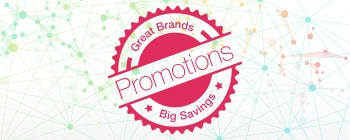Learn More
Hemoglobin gamma-1,2 Recombinant Rabbit Monoclonal Antibody (JM84-10), Invitrogen™
Rabbit Recombinant Monoclonal Antibody
Marca: Invitrogen MA532603
Descripción
Recombinant rabbit monoclonal antibodies are produced using in vitro expression systems. The expression systems are developed by cloning in the specific antibody DNA sequences from immunoreactive rabbits. Then, individual clones are screened to select the best candidates for production. The advantages of using recombinant rabbit monoclonal antibodies include: better specificity and sensitivity, lot-to-lot consistency, animal origin-free formulations, and broader immunoreactivity to diverse targets due to larger rabbit immune repertoire.
Hemorrhage of cells from an Rh+ fetus into the circulation of an Rh- mother may result in the formation of Rh-reactive antibodies in the mother. Rh hemolytic anemia in a subsequent Rh+ fetus may result from placental transfer of antibodies formed in the mother to the fetus. Although the volume of fetal erythrocytes found in the maternal circulation during pregnancy and immediately post-partum is reported to be small and of uncertain clinical significance in many cases, substantial hemorrhage may result from a number of causes including fetal or maternal trauma and placental defects. Erythrocytes containing fetal hemoglobin may be found in individuals of any age, but with lower amounts of fetal hemoglobin compared to fetal red cells. These cells have been termed F cells. High levels of F cells may also exist in adults with a heterogeneous group of genetic disorders of uncertain etiology, referred to as Hereditary Persistence of Fetal Hemoglobin. Other clinical conditions causing significant levels of anemia may also result in elevated levels of F cells. Several clinical conditions have been described with increased levels of F cells. These conditions include hereditary anemic diseases such as sickle cell anemia and thalassemia major.
Especificaciones
| Hemoglobin gamma-1,2 | |
| Monoclonal | |
| 1 mg/mL | |
| TBS with 0.05% BSA, 40% Glycerol and 0.05% sodium azide, pH 7.4 | |
| P69891, P69892 | |
| HBG1, HBG2 | |
| Synthetic peptide within Human HBG1/2 aa 2-45 | |
| 100 μL | |
| Primary | |
| Human | |
| Antibody | |
| IgG |
| Immunocytochemistry, Immunohistochemistry, Western Blot, Western Blot | |
| JM84-10 | |
| Unconjugated | |
| HBG1 | |
| abnormal hemoglobin, A-gamma globin, gamma A hemoglobin, gamma globin, gamma-1-globin, Gamma-2-globin, G-gamma globin Paulinia, hb F Agamma, Hb F Ggamma, HBG1, HBG2, HBGA, HBGR, HBG-T1, HBG-T2, Hemoglobin gamma-1 chain, hemoglobin gamma-2 chain, Hemoglobin gamma-A chain, hemoglobin gamma-G chain, hemoglobin subunit gamma 1, hemoglobin subunit gamma 2, hemoglobin subunit gamma-1, Hemoglobin subunit gamma-2, hemoglobin, gamma A, hemoglobin, gamma G, hemoglobin, gamma, regulator of, HSGGL1, methemoglobin, PRO2979, TNCY | |
| Rabbit | |
| Protein A | |
| RUO | |
| 3047, 3048 | |
| Store at 4°C short term. For long term storage, store at -20°C, avoiding freeze/thaw cycles. | |
| Liquid |
Proporcione sus comentarios sobre el contenido del producto rellenando el siguiente formulario.















